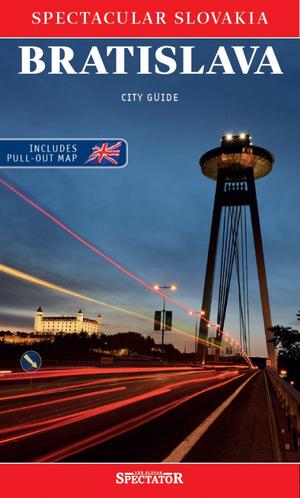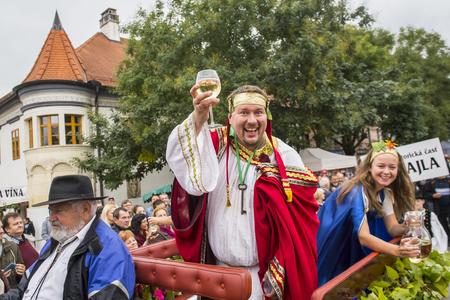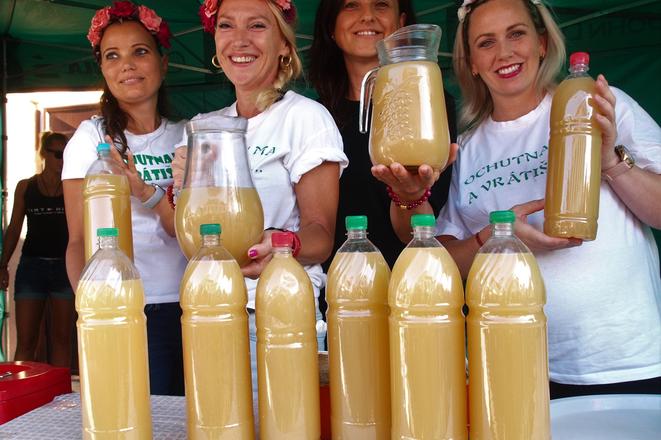The plastic bottles filled with an unalluring yellowish murky liquid on chairs in front of houses flanking the main road via towns and villages at the foot of the Small Carpathians, unmistakably indicate that wine harvest time is here. While some pull their cars to the pavement and buy a bottle of burčiak – slightly fermented grape juice – to drink at home, others prefer to enjoy it at the vinobranie (lit. wine harvest) festivals with a piece of roasted duck with lokša, i.e. potatoes pancake.
 Lost in Bratislava? Impossible with this City Guide! (source: Spectacular Slovakia)
Lost in Bratislava? Impossible with this City Guide! (source: Spectacular Slovakia)
The grape harvest festival season in the region of Bratislava starts in late August and lasts until mid November. Burčiak, a slightly alcoholic and sparkling drink, is a regional specialty offered only in Slovakia, the Czech Republic and Austria.
“I like to go to wine harvest festivals not only to taste burčiak, but also to talk with wine makers and wine growers about wine and current wine season, or just to meet with friends which, especially now when everything is affected by the coronavirus pandemic, I highly appreciate,” Renáta Novotná, a regular visitor of wine harvest festivals told The Slovak Spectator.

Wine growers warn that due to the cold spring, the grapes in Slovak vineyards are not ripe yet. Even though Slovak legislation has permitted the sale of burčiak already from August 15, people should wait until late August to buy quality burčiak produced from Slovak grapes. Otherwise they risk buying fake burčiak with added sugar or burčiak produced from imported grapes, the Slovak Agriculture and Food Chamber (SPPK) said, while it claims that the wait is worth it. Thanks to a hot July the harvest season will be postponed by approximately one week instead of the originally expected three weeks.
“There are indications that this year is extremely promising, especially for white wines,” said Jana Holéciová, spokesperson of SPPK as cited by the TASR newswire. “The burčiak will be very sweet while acids should be preserved and very well balanced.”


 The offer of burčiak, slightly fermented grape juice, is a specialty offered at grape harvest festivities in Slovakia. (source: TASR)
The offer of burčiak, slightly fermented grape juice, is a specialty offered at grape harvest festivities in Slovakia. (source: TASR)